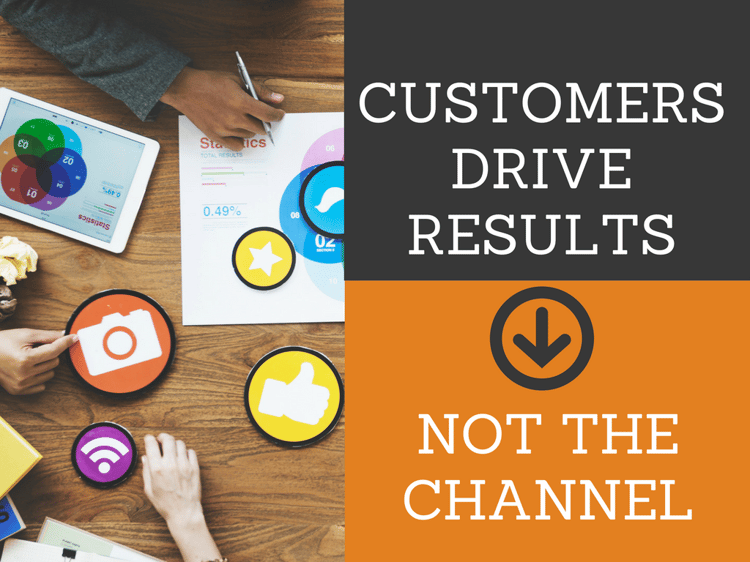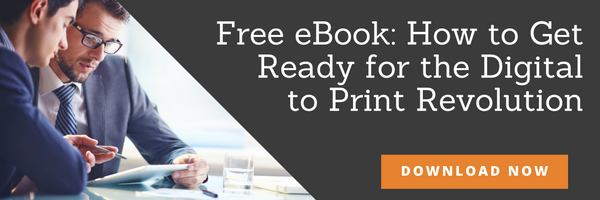
Truly customer-focused marketing requires businesses to look at their strategy from their audiences’ point of view. Instead of focusing on what your company does well and how you can capture audience information to use for further marketing efforts, you must find a way to appeal to customers in a variety of ways that are unobtrusive as well as helpful. The end result is that your company can meet your customers where they are rather than where it’s convenient for your brand to be.
So how can you create a customer-focused marketing strategy that captures the actionable data you need, engages your audience and drives results? Start with the customer. Always.
The Age of Experience
The notion of the customer experience is the trendy topic in marketing these days. There’s a good reason for this. Studies have shown that if the customer is assured a good experience, they’ll pay more when companies go the extra mile. It’s the experience — the sum of all interactions a customer has with a company — that makes people rave about a business, and it’s this experience that prompts people to tell their friends and to post their positive feedback on social media.
And that’s why the customer experience demands a great deal of attention from marketers. Today’s consumer wants more than a one-and-done attitude towards transactions — and they’re willing to pay extra for it. By making the path to purchase — from postcard offers to in-store purchase to online shopping and even social media engagement — an enjoyable experience, you’ll go a long way towards creating a long-term customer who looks forward to every interaction with your brand.
Map the Customer Journey
Understanding how people move from product awareness to loyal brand advocate is essential to making the customer experience the best it can be. The more you know about the typical path to purchase, the better equipped you’ll be in terms of nurturing your audience and guiding customers through the buyer’s journey. Without this map, you’re flying without a safety net. But if you can navigate the various paths your audience takes as they engage with your company, you can focus your energies on the important factors that encourage people to purchase, as well as the media through which those messages should be delivered.
Mapping out the customer’s path to purchase enables you to do much more than automate your marketing tactics. It allows you to put to good use the knowledge you’ve accumulated about your customers. For example, you may discover that your target audience prefers to try your products out in a store before they make a purchase. Depending on your line of business, this can be an in-store product demo, an interactive customer activity, a touch screen app that gives personalized product recommendations or other marketing collateral that works for your audience. You’ll also want to focus on the excitement level around your in-store experience. You may want to promote a branded hashtag to use when customers post pictures of your product so they can feel like they’re part of something special.
The principles behind this example of the in-store customer experience should be applied at all major points of the customer’s path to purchase. Doing this will show off the friendly, inviting and fun side of your company you want to portray to your customer base. While you are looking to increase ROI, it’s equally as important that people enjoy the entire experience they have with your brand. At the end of the day, that experience is what drives future business, both from your customers and their friends and family.
Understand Your Customers as People
One thing that’s become abundantly clear in modern-day marketing is the importance of first-party data. In other words, the relationship you have with your customer is unique to your brand, and your ability to utilize data to its fullest potential is what separates you from the competition. After all, there’s nobody that better understands the relationship your customers have with your brand than you do, and you can and should use this knowledge to your advantage.
But to really get the most out of this relationship, you have to see your customers as more than dollar signs. You have to get to know them as people. If you don’t, you won’t understand their motivations, and that will prevent you from effectively marketing to your audience. Maintaining a vigilant eye on first-party data will also help you to take note of changes that occur within your audience. Quickly spotting these trends will allow you to change your approach on the fly, an essential skill in the modern world of instantaneous personalized marketing.
Developing this understanding of your customers — and applying it on an everyday basis — is what will help you to take their buying experience to the next level. Knowing your audience intimately will enable you to understand their pain points, their desires and their methodology for buying, as well as the manner in which they like to communicate. Using data to drive your decisions is the best way to consistently put the customer first and make sure her voice is heard in all of your marketing activities.
Develop Your Customer-Focused Strategy
Gathering data and identifying the customer’s journey is only the first part of implementing a customer-focused marketing strategy. What’s far more challenging is actually putting your research into practice.
The thought of changing fundamental aspects of your marketing campaign to achieve a hypothetical end result that has no guaranteed ROI can be a bit daunting. But it’s not an exercise in throwing changes at the wall and seeing what sticks. Instead, becoming more customer-focused simply means eliminating the barriers that prevent the customer from getting the most out of their buying journey.
The data you’ve accumulated tells you a lot about what consumers like about your company and how they typically like to interact with your business. However, just as important are the things that people don’t like. Starting with this intent data not only helps you to turn a negative into a positive, but it also allows you to make small changes that build up to major shifts in the customer experience.
The customer experience isn’t about your business. It’s about the customer — a customer who weighs their entire experience as part of the value of their purchase. Give them that experience, but most importantly, give the customer what they want on their own terms. The moment you decide what a customer wants on their behalf is the moment that individual becomes a former customer.
Engaging Your Customers on Each Step of the Buyer’s Journey
No longer can companies market to customers based on the media and philosophies that the marketing team is comfortable with. Today’s consumer demands a personalized experience that fits their exact needs and wants. They want to feel that you “get them.” Companies that want to utilize a customer-focused marketing strategy must understand the motivations of their audience and find ways to make the customer’s experience along the buyer’s journey as enjoyable and engaging as possible. The collection and use of intent data will help companies set customer-focused goals that adapt along with their audience, creating a truly customer-obsessed culture that provides exactly what customers want at exactly the right time.


Lookalike Audiences Enhance customer acquisition by identifying high-potential prospects, boosting response rates, and lowering advertising costs.
Retargeting Postcards Double the performance of your direct mail retargeting.
Amplify Recognize unknown visitors who are actually customers. Add 20-40% to your ESP/CRM campaigns.
IQ Mail Retain customers with personalized, timely messages for those opting out of digital channels.







Comments